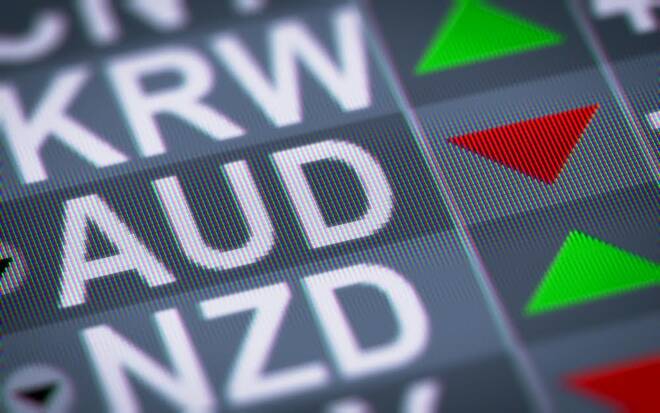Advertisement
Advertisement
AUD/USD and NZD/USD Fundamental Daily Forecast – Investors Flee Riskier Aussie, Kiwi for Safe-Havens
By:
Aussie and Kiwi traders may delay their reactions to any domestic economic news until they get some clarity about the new COVID-19 variant.
The Australian and New Zealand Dollar plunged on Friday as investors shed riskier assets for the relative safety of safe-haven currencies following the discovery of a new coronavirus variant that could resist current vaccines. Despite the sharp break, some traders cast doubts on the size of the move with some chalking it up to thin post-holiday volume in the United States following Thursday’s Thanksgiving holiday.
On Friday, the AUD/USD settled at .7122, down 0.0067 or -0.93% and the NZD/USD finished at .6821, down 0.0036 or -0.52%.
Overnight headlines ahead of Friday’s opening took traders by surprise with little known of the new COVID-19 variant, detected in South Africa, Botswana and Hong Kong. But scientists reckon it has an unusual combination of mutations and may be able to evade immune responses or make it more transmissible.
The move by the Aussie and Kiwi were described as textbook as investors fled the currencies and moved their money into the traditional safe-havens – U.S. Treasury bonds, U.S. Dollar, Japanese Yen and Swiss Franc. Compounding the excessive selling pressure was thin liquidity. This was especially seen in the unwinding of Australian and New Zealand Government bond positions.
Australian Retail Sales Surge in October as Economy Revives
Australian retail sales rebounded with a bang in October as the lifting of many stay-at-home restrictions unleashed a wave of pent-up shopping, further evidence the economy is recovering rapidly from a pandemic-induced slump, Reuters reported.
Data from the Australian Bureau of Statistics out on Friday showed retail sales jumped 4.9% in October to A$31.1 billion ($22.31 billion), extending September’s already strong 1.7% bounce. That was almost double market forecasts of a 2.5% rise, with clothing stores boasting gains of almost 28%; department stores 22% and restaurants 12%.
The cash slash means the A$360 billion retail sector will make a major contribution to economic growth, Reuters said.
“Real consumer spending could bounce back by 10% this quarter, leaving it very close to its pre-delta peak,” said Marcel Thieliant, a senior economist at Capital Economics. “And with the household savings rate still very high, consumption will continue to expand at a rapid pace next year.”
Short-Term Outlook
Aussie and Kiwi traders may decide to delay their reactions to any economic news until they get some clarity about the potential impact from the new COVID-19 variant. As of Friday’s close there is just too much uncertainty over how rapidly it is spreading and how the governments of Australia and New Zealand are likely to respond to the new developments.
For a look at all of today’s economic events, check out our economic calendar.
About the Author
James Hyerczykauthor
James Hyerczyk is a U.S. based seasoned technical analyst and educator with over 40 years of experience in market analysis and trading, specializing in chart patterns and price movement. He is the author of two books on technical analysis and has a background in both futures and stock markets.
Advertisement
